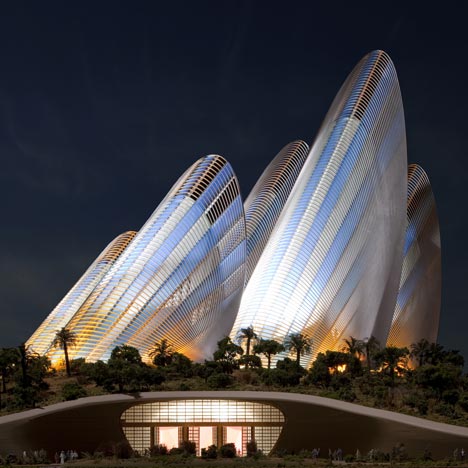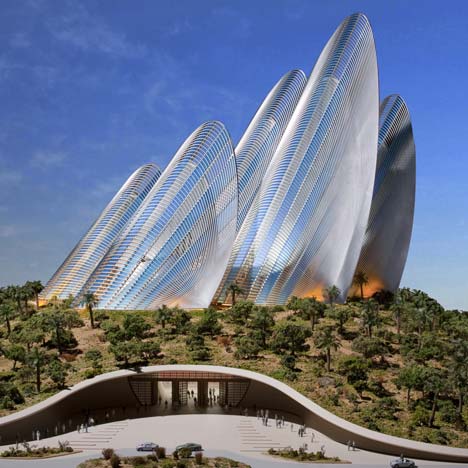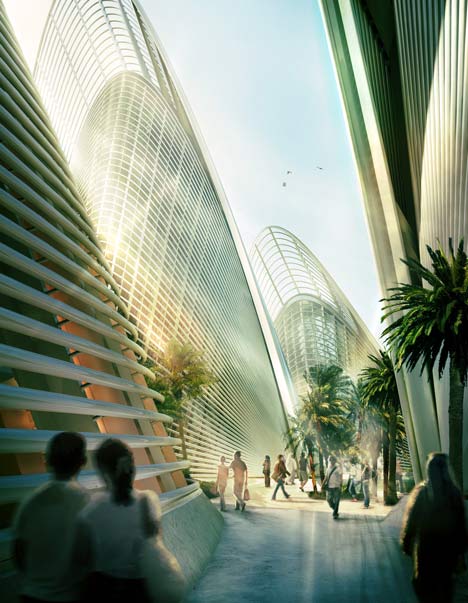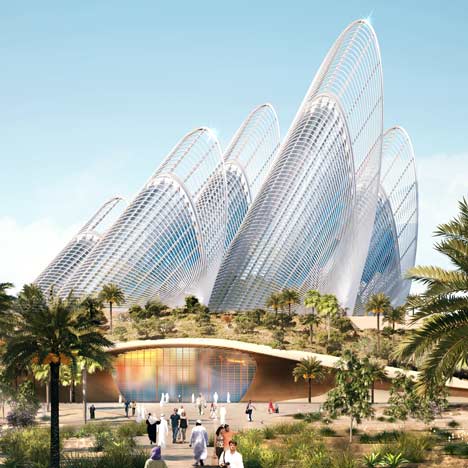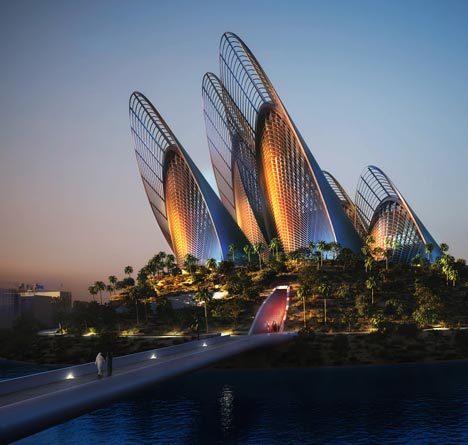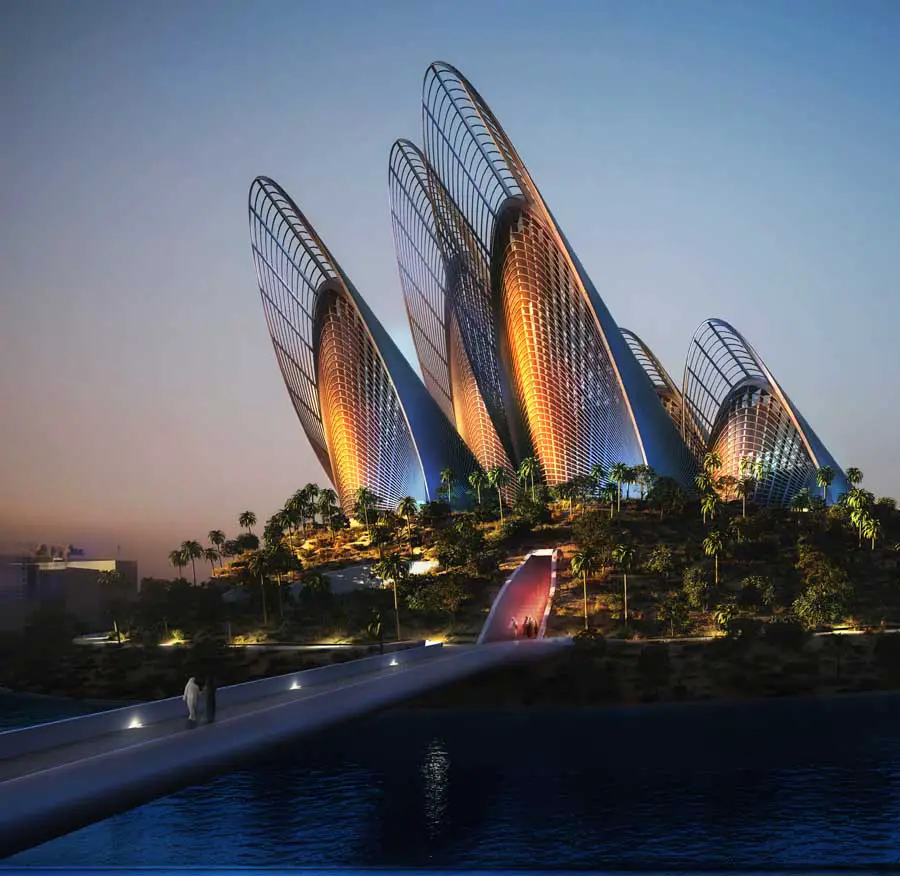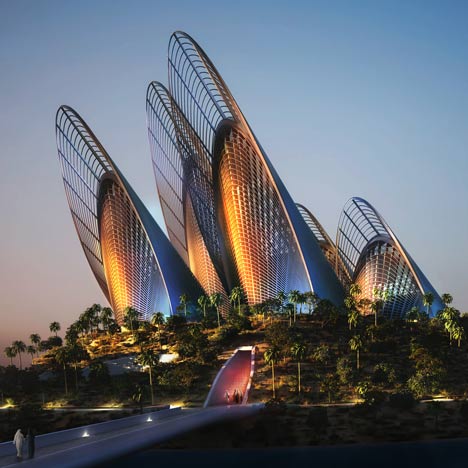
Foster + Partners has designs a museum on Saadiyat Island in Abu Dhabi.
Lord Foster said: "It was a great privilege to work in the Zayed National Museum, to carry forward the vision of Sheikh Zayed and communicate the dynamic nature of a contemporary UAE. We have tried to create a building that is an example of sustainable design, Sheikh Zayed resonate with love of nature and heritage in general. "
The National Zayed Mueum have five light steel towers like the wings of birds, is inserted into a landscaped mound with gallery spaces located on the ground floor.
The exhibition spaces are inside of a man, landscaped mound. The galleries are placed at the base of five towers of solar thermal energy. The hot towers and act like chimneys to draw hot air flows through the museum natural cooling. Fresh air is captured at a low level and passing through the cooling pipes buried in the ground and then released into the lobby of the museum.
The heat in the top of the towers works to remove the air vertically through the galleries by the thermal effect of stack. The vents open on the top of the wing-shaped towers take advantage of the negative pressure in the shelter of the wing profile remove hot air.
Here in the museum of these towers are lightweight structures of steel, aerodynamically sculpted to work as the wing feathers of a bird. The analogies with the hawks and flight are deliberate and are directly related to Sheikh Zayed's love of falconry. This item is held by a gallery devoted to the subject as part of a broader approach to conservation. These interior spaces open to an outdoor space for live demonstrations with game birds.
Lattice towers be designed to act as thermal vents bring fresh air into the spaces below, while the cooling pipes will be buried beneath the release of fresh air in the lobby.
The name of UAE founder Sheikh Zayed bin Sultan Al Nahyan, the museum will be dedicated to the history and culture.
The museum is the latest superstar of the design capacity to be submitted for Saadiyat Island cultural district, a performing arts center by Zaha Hadid, Frank Gehry's Guggenheim, a branch of the Louvre by Jean Nouvel, a maritime museum by Tadao Ando already underway.
The design was presented by His Highness Sheikh Mohammed bin Rashid Al Maktoum, Vice President and Prime Minister of UAE and Ruler of Dubai and Her Majesty Queen Elizabeth II of the United Kingdom. Conceived as a memorial and a monument to the late Sheikh Zayed bin Sultan Al Nahyan, the founding president of the UAE, the Museum will be the centerpiece of the Cultural District of Saadiyat Island and will showcase the history, culture and more recently, the social and economic transformation of the Emirates.
Architecturally, the aim has been to combine high efficiency, simultaneously with traditional Arabic design elements and hospitality to create a museum that is sustainable, and cultural atmosphere of place. Celebrating the legacy of Sheikh Zayed and the love of nature, the museum is located in a park, based on a timeline of his life.
Balancing light steel structures, with a monumental interior experience, the galleries are anchored by a spectacular illuminated central upper hall, which is dug into the ground to exploit their thermal properties and collect stores, cafeterias, an auditorium and informal spaces performances of poetry and dance. At all times, the treatment of light and shadow is based on a tradition of discretion, carefully placed openings, capturing the intense and direct sunlight in the region to enlighten and encourage those indoors.
Objects are displayed in niches and stone plinths rising from the ground to perfection.
The museum contains a variety of performance spaces. A large auditorium, lined with textile UAE, offers a charming setting for presentations and movies. The lobby incorporates more informal places for poetry readings, music and dance, where people can gather in a circle to enjoy the spectacle and atmosphere of the traditional interpretations.
The interior of the restaurant concept is based on the opulence and hospitality of the Bedouin tent, with carefully selected furniture. The Majlis, or VIP areas, opening onto a central courtyard. This traditional space offers a unique perspective, since it is the only place in the museum where you can enjoy views of the wind towers.
